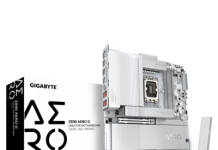
The Hong Kong Electronics Fair (Autumn Edition) and electronicAsia concluded their four-day showcase, welcoming over 60,000 buyers from 136 countries and regions. This year’s events were more than just a networking hub—they served as a critical platform for the industry to highlight the most cutting-edge technologies transforming the electronics landscape. From the rise of wearable electronics to the integration of robotics in various sectors, the fairs placed an unmistakable spotlight on innovations that are shaping the future of smart living and industrial advancements.
One of the key takeaways from an on-site survey conducted with over 1,000 participants was the clear optimism surrounding the future of technology. A significant 65% of respondents viewed wearable electronics as having “promising” or “very promising” market potential. This category includes smartwatches, health trackers, and immersive AR/VR headsets—products that are becoming integral to both personal and professional life. Robotics technology also took centre stage, with 59% of respondents expecting strong growth. The robotics applications are vast, spanning from medical rehabilitation to industrial automation, with exhibitors showcasing innovations that push these technologies into real-world use.
Game-Changing Exhibitors and Tech Highlights
The event’s exhibition halls buzzed with excitement as industry leaders and up-and-coming startups unveiled a wide array of technologies. First-time exhibitor Zunosaki Limited gained attention for its hand rehabilitation robot, which is designed to assist stroke patients in regaining motor functions. In just the first half of the exhibition, Zunosaki attracted interest from buyers in Taiwan and Korea, with potential applications expanding beyond healthcare into industries requiring precise motor functions.

Similarly, the well-known local brand Momax reported significant success, forming long-term partnerships with major buyers from the Asia-Pacific region and Europe. John Cheng, CEO of Momax, highlighted their early achievements at the fair, including securing a $50,000 order with a Papua New Guinea-based company and establishing contacts through the HKTDC’s Click2Match platform. These successful negotiations demonstrate how Hong Kong’s position as a global technology hub continues to thrive, with international buyers flocking to the fair to discover innovations and collaborate on long-term projects.

Another standout exhibitor was Dongguan Maochang Printed Circuit Board Ltd, which used the event to scout for new markets and emerging trends. Throughout the fair, their sales team met with over 200 potential buyers, highlighting the role electronicAsia plays in connecting businesses with global opportunities. The company’s sales director, Michael Tsang, emphasized that the event provided valuable insights into the future needs of the electronics market, allowing them to fine-tune their product offerings.
Shifting Market Trends and Emerging Opportunities
The event also shed light on the geographical regions that are expected to drive future growth in the electronics market. According to the survey, emerging markets like India, the Middle East, and Latin America are poised to see significant expansion, with 53% of respondents anticipating a boost in overall sales in the next 12-24 months.
North America and Europe remain key markets, especially for e-sports products and electronic entertainment equipment, where 56% of respondents see tremendous potential for growth.

The fair didn’t just focus on the present but also looked forward to how the electronics industry will evolve in the coming years. The Symposium on Innovation & Technology, themed “When Two Worlds Collide: The Confluence of Digital Twins & Real-Life Applications,” attracted significant attention. Thought leaders discussed how digital twin technology—virtual replicas of physical objects—can be leveraged in real-life scenarios to improve efficiency and predict outcomes in industries like manufacturing, logistics, and healthcare.
Expanding the Boundaries of Digital Entertainment and Smart Cities
This year’s fair introduced a range of new zones, including the “Digital Entertainment Experience Zone,” where attendees could interact with the latest in gaming and immersive technology, trying out AR, VR, and e-sports products. These zones highlighted how digital entertainment is evolving rapidly, with more integrated, immersive experiences becoming accessible to consumers.

The Tech Hall, another major highlight of the fair, showcased products driven by next-gen technologies like 3D printing, IoT, robotics, and extended reality (XR). These exhibits gave attendees a glimpse into the future of smart cities, smart homes, and gerontechnology, where connectivity and automation are set to redefine how people interact with their environments.
The concurrent electronicAsia fair focused on electronic components and parts that power these advanced products. From power supply equipment to keyboards and switches, the expo provided a comprehensive look at the building blocks of tomorrow’s electronic devices. The fair’s focus on the intersection of microelectronics, AI, and open-source ecosystems further underscored the importance of collaboration and integration in driving technological breakthroughs.
Looking Ahead: A Promising Future for Electronics
The fair’s success in attracting both seasoned industry players and emerging startups underlines its status as a premier global platform for innovation. Events like the Hong Kong International Lighting Fair, set to take place later this month, will continue to create cross-industry business opportunities, helping to fuel growth in sectors like smart lighting and eco-friendly technologies.

With the global market for wearables and robotics expected to soar, the Hong Kong Electronics Fair and electronicAsia have reinforced their role as catalysts for innovation. As buyers and exhibitors move beyond the physical fair, the EXHIBITION+ hybrid model ensures that business matching and negotiations can continue seamlessly online via the Click2Match platform, giving the industry a dynamic, multi-channel approach to expanding business opportunities.
This year’s fairs didn’t just highlight the latest in tech—they provided a roadmap for where the electronics industry is headed, with robotics and wearable tech leading the charge towards a smarter, more connected world.
Click here to view upcoming Trade Fairs and Shows from HKTDC.








